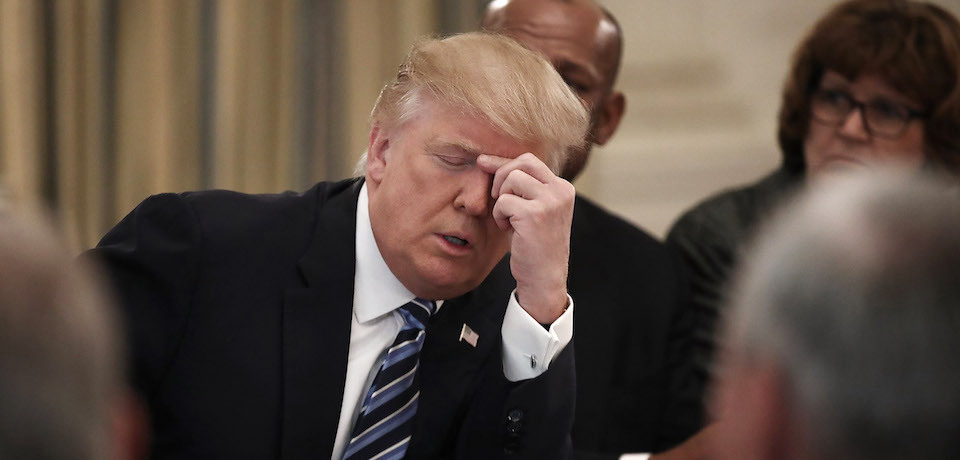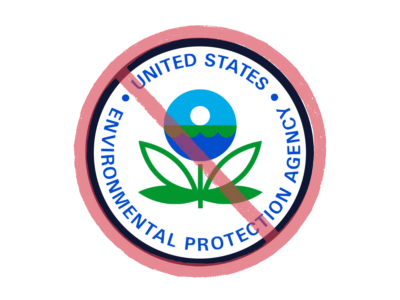Pretzel Logic
The bases for Trump Administration rulemakings contain some real head-scratchers.

The Trump Administration has been hard at work to roll back Obama-era administrative agency actions, and like many of my colleagues, I’ve been sifting through pages and pages of the administration’s bases for the about-face on a number of environmental regulations. As I’ve done so, a theme has emerged: these rule rollbacks and replacements often rely on contradictory statements and reasoning to justify the administration’s desired outcome.
Take, for example, the joint NHTSA-EPA rulemaking—the so-called “SAFE Vehicles Rule”—rolling back federal fuel economy standards for passenger cars and light trucks model years 2021-2026 and revoking California’s waiver for its Advanced Clean Cars program. Trump’s NHTSA and EPA say that the previously-adopted standards for future model years should be frozen at 2020 levels because the Obama-era standards are not cost-effective, are costly to consumers, and will increase traffic fatalities. The problem is that, throughout the proposed rule, the agencies offer inconsistency after inconsistency in an attempt to justify the change. Here are just a handful of examples (of many) that I picked out:
- The proposed rule claims that an “industry-wide CAFE standard imposes disproportionate cost burden and compliance challenges on manufacturers who produce more vehicles with attributes inherently correlated with lower fuel economy—i.e. manufacturers who produce, on average large vehicles.” 83 Fed. Reg. 43016. But at the same time, the rule says that the cost for improving the fuel economy of “low fuel economy vehicles is far less than for higher fuel economy vehicles,” a proposition that the rulemaking relies on to argue that improving fuel economy is subject to diminishing returns that undercut its cost-effectiveness. 83 Fed. Reg. 42991-92. It can’t be true that vehicles with lower fuel economy are both bearing a disproportionate cost burden from the CAFE standards and have it much easier than higher fuel economy vehicles when it comes to cost of compliance.
- Trump’s NHTSA and EPA tout supposed safety gains from the standards rollback, saying that “[a] large portion of these safety benefits will come from improved fleet turnover as more consumers will be able to afford newer and safer vehicles.” 83 Fed. Reg. 42995. However, the proposed rule also alleges that “the average new car price is unaffordable to median-income families in every metropolitan region in the United States except one: Washington, DC.” 83 Fed. Reg. 42994. The CAFE standards rollback will have no impact on current car prices, because it changes the standards for future model years by freezing them at current levels. In other words, if car prices are currently too expensive, freezing the standards at current levels won’t offer price relief to consumers who already can’t afford new cars. There has been plenty of evidence to support the cost-effectiveness of the Obama-era CAFE standards for consumers: for example, improved fuel economy can save significantly more money over the lifetime of car ownership in reduced gas consumption than the marginal pass-through cost to the consumer to make manufacturing changes that improve fuel economy. But even if you accept the argument that the cost to consumers of improving fuel economy is too high and will make cars even less affordable than they already are, the fact that they are already unaffordable, per the administration’s own argument, means that if this proposed rule freezes the standards, consumers will be no more able to buy new cars than they already are. And that means, in turn, that the safety gains the rulemaking claims are specious.
- The agencies are also of split mind when it comes to how much people will drive as a result of the proposed rule—which, of course, has important implications both for calculating emissions increases as a result of the changes and for the “safety” argument. The agencies say both that people are driving more as a result of lower fuel prices, which they assume will remain static through 2050 (even though they admit elsewhere in the rule that “[f]uel prices a decade and more from now are not knowable with certainty”) and that people will drive less as a result of the standards freeze because their cars will be less fuel-efficient. 83 Fed. Reg. 43003, 43067. That, of course, ignores the fact that a freeze of current standards won’t have any impact on the fuel efficiency of the cars already on the road, which the agencies already say are driving more. The agencies further justify themselves by citing to the “rebound effect”—the concept that better fuel economy means drivers drive more and thereby emit more—but then cite as evidence European studies that conclude drivers are “less sensitive to variation in driving costs caused by changes in fuel efficiency than to changes in driving costs arising from variation in fuel prices.” 83 Fed. Reg. 43102. In other words, if fuel prices stay low, as the agencies predict, that will matter more, and mean more driving, even if the standards freeze where they are.
- This contradictory logic shows up in the agencies’ rational for revocation of California’s 2013 Advanced Clean Cars program waiver as well. The agencies say that California has no “compelling and extraordinary” need for its waiver because the GHG-related impacts are “by no means limited to California,” calling climate change impacts “issues of national, indeed international, concern.” 83 Fed. Reg. 43249. This, of course, ignores the many reasons why California is especially impacted by climate change and GHG emissions. But even so, the agencies are moving to weaken, not strengthen, federal emissions standards; in fact, weaker standards on the federal level are the historic (and current) reason California needs its own standards. Calling the problem “national” and then undercutting a national program designed to address it doesn’t make much sense.
And the SAFE Vehicles Rule isn’t the only place where the Trump Administration employs head-scratching logic to support a proposed rule change. Here are just a couple of examples:
- I wrote last week about PHMSA’s finalization of a final rule rolling back Obama-era regulations that imposed important brake systems controls on trains that carry hazardous and highly flammable materials, including crude oil. Trump’s PHMSA concluded the previously-required brake control technology, designed to ameliorate the impacts of trail derailments, was no longer necessary in light of reduced transportation of crude oil (in part associated with fuel prices). 83 Fed. Reg. 48395. But that directly contradicts NHTSA’s and EPA’s assertion in the SAFE Vehicles Rule that “technological advances that allow for cost-effective extraction of shale oil” are expected to lead to lower fuel prices, increased fuel consumption, and the United States’ shift to “a net petroleum exporter in the next decade.” 83 Fed. Reg. 42993, 43067.
- We also saw this kind of thinking used to justify BLM’s final rule gutting Obama-era requirements for well equipment designed to reduce flaring, venting, and leaks and emissions capture from flaring wells. BLM pointed to the existence of new source performance standards for wells as evidence that the Obama-era rule was overkill, even though EPA had committed only a week earlier to rolling those same standards back.
This kind of rationale is a dubious basis for agency administrative action because rulemakings are required to be supported by sound reasoning. This is even more critical when, as in these cases, the rulemakings reverse a prior agency action: “an agency changing its course by rescinding a rule is obligated to supply a reasoned analysis for the change beyond that which may be required when an agency does not act in the first instance.” Motor Vehicle Mfrs. Ass’n of U.S., Inc. v. State Farm Mut. Auto. Ins. Co., 463 U.S. 29, 42 (1983). Legal challenges are sure to follow all of the agency actions I’ve discussed in this post; the Trump Administration’s contradictory logic certainly supports an argument that the agencies’ “path[s] of analysis [were] misguided and the inferences [they] produced are questionable.” State Farm, 463 U.S. at 44.







Reader Comments